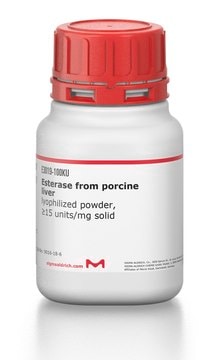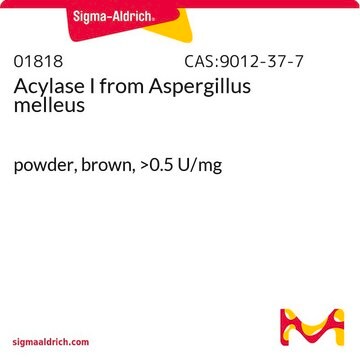A6691
Amidase from Pseudomonas aeruginosa
recombinant, expressed in E. coli, buffered aqueous glycerol solution, hydroxamate transferase ≥200 units/mg protein (biuret)
Sinônimo(s):
Acrylamide Amidohydrolase, Acylase
Selecione um tamanho
Selecione um tamanho
About This Item
Produtos recomendados
recombinante
expressed in E. coli
Formulário
buffered aqueous glycerol solution
hydroxamate transferase activity
≥200 units/mg protein (biuret)
concentração
14 mg/mL
nº de adesão UniProt
temperatura de armazenamento
−20°C
Informações sobre genes
Pseudomonas aeruginosa PAO1 ... PA4163(880181)
Procurando produtos similares? Visita Guia de comparação de produtos
Aplicação
Ações bioquímicas/fisiológicas
Definição da unidade
forma física
Palavra indicadora
Danger
Frases de perigo
Declarações de precaução
Classificações de perigo
Resp. Sens. 1
Código de classe de armazenamento
12 - Non Combustible Liquids
Classe de risco de água (WGK)
WGK 1
Ponto de fulgor (°F)
Not applicable
Ponto de fulgor (°C)
Not applicable
Equipamento de proteção individual
Eyeshields, Gloves, multi-purpose combination respirator cartridge (US)
Escolha uma das versões mais recentes:
Já possui este produto?
Encontre a documentação dos produtos que você adquiriu recentemente na biblioteca de documentos.
Os clientes também visualizaram
Active Filters
Nossa equipe de cientistas tem experiência em todas as áreas de pesquisa, incluindo Life Sciences, ciência de materiais, síntese química, cromatografia, química analítica e muitas outras.
Entre em contato com a assistência técnica










